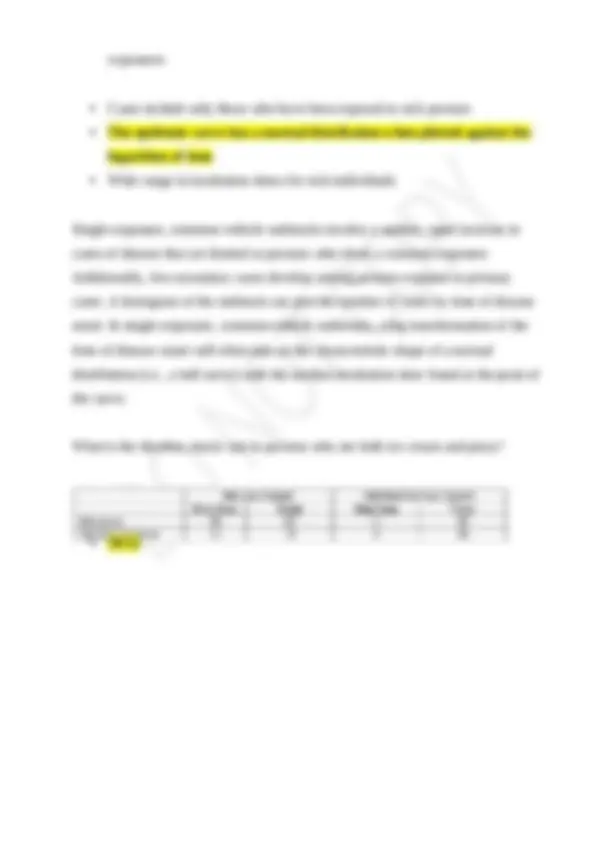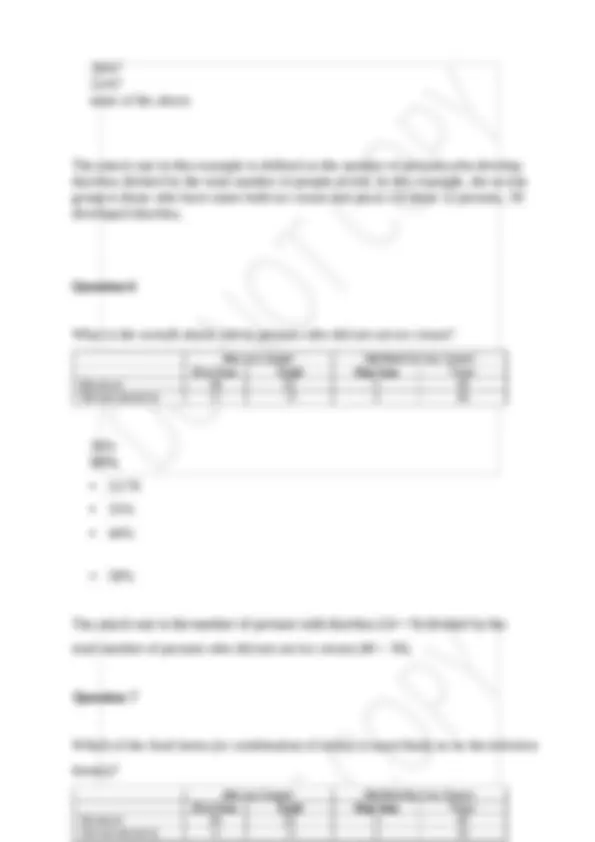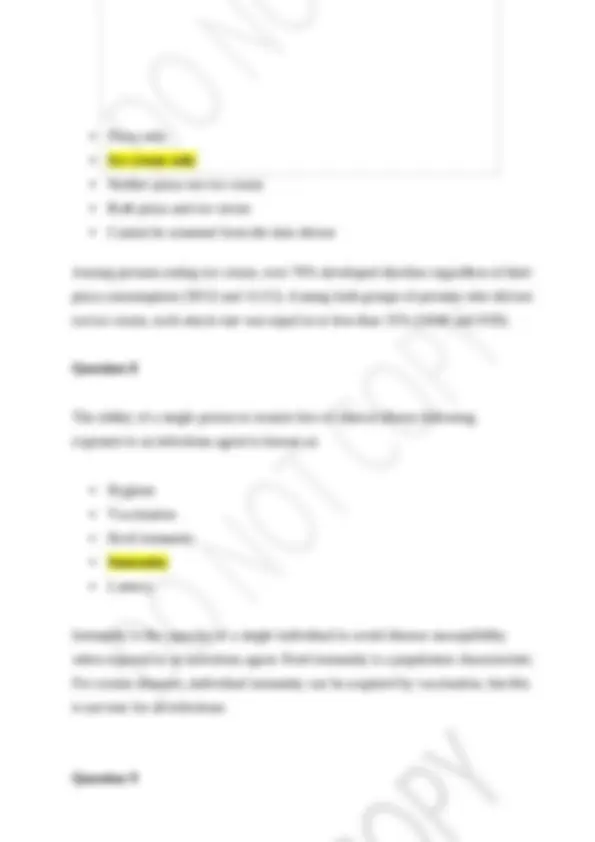





Study with the several resources on Docsity

Earn points by helping other students or get them with a premium plan


Prepare for your exams
Study with the several resources on Docsity

Earn points to download
Earn points by helping other students or get them with a premium plan
Community
Ask the community for help and clear up your study doubts
Discover the best universities in your country according to Docsity users
Free resources
Download our free guides on studying techniques, anxiety management strategies, and thesis advice from Docsity tutors
NR 503 WEEK 8 QUIZ EXAM NR 503 WEEK 8 QUIZ EXAM
Typology: Exams
1 / 7

This page cannot be seen from the preview
Don't miss anything!




Question 1 Which of the following is a condition which may occur during the incubation period?
- Onset of clinical illness - Receipt of infection - Signs and symptoms of disease - Transmission of infection - Isolation of disease carrier through quarantine Rationale :The incubation period is defined as the interval from receipt of infection to the time of onset of clinical illness. Accordingly, individuals may transmit infectious agents during the incubation period as they show no signs of disease that would enable the isolation of sick individuals by quarantine. Question 2 Chicken pox is a highly communicable disease. It may be transmitted by direct contact with a person infected with the varicella-zoster virus (VZV). The typical incubation time is between 10 to 20 days. A boy started school 2 weeks after showing symptoms of chicken pox including mild fever, skin rash, and fluid-filled blisters. One month after the boy returned to school, none of his classmates had been infected by VZV. The main reason was:Herd immunity - All had been immunized prior to the school year - Contact was after infectious period - Subclinical infections were not yet detected - Disease was endemic in the class The disease is spread by contact with an infected individual who can transmit the agent (VZV) to immunologically naive persons during the incubation period and for several days after onset of clinical illness. Since the boy started school 14 days after
showing signs consistent with chicken pox, it is most likely that he was no longer infectious. Question 3 Which of the following reasons can explain why a person who did not consume the infective food item got sick?
- They were directly exposed to persons who did eat the infective food item - Diarrhea is a general symptom consistent with a number of illnesses - There may have been an inaccurate recall of which foods were eaten - All of the above - None of the above Without knowledge as to the specific agent in this instance, it is also likely that it can be spread by direct contact with infected persons. Since diarrhea is a general disease symptom, it is possible that several infectious agents may be present at this meal or others eaten during the same time period. Further, information regarding food consumption may have been collected long after the disease episode. This may have led persons to incorrectly remember the foods that they consumed. Question 4 Which of the following is characteristic of a single-exposure, common-vehicle outbreak? - Long latency period before many illnesses develop - There is an exponential increase in secondary cases following initial
none of the above The attack rate in this example is defined as the number of persons who develop diarrhea divided by the total number of people at risk. In this example, the at-risk group is those who have eaten both ice cream and pizza. Of these 52 persons, 39 developed diarrhea. Question 6 What is the overall attack rate in persons who did not eat ice cream? 30% 33%
- 21/ - 35% - 44% - 58% The attack rate is the number of persons with diarrhea (14 + 9) divided by the total number of persons who did not eat ice cream (40 + 30). Question 7 Which of the food items (or combination of items) is most likely to be the infective item(s)?
- Pizza only - Ice cream only - Neither pizza nor ice cream - Both pizza and ice cream - Cannot be assumed from the data shown Among persons eating ice cream, over 70% developed diarrhea regardless of their pizza consumption (39/52 and 11/15). Among both groups of persons who did not eat ice cream, each attack rate was equal to or less than 35% (14/40 and 9/30). Question 8 The ability of a single person to remain free of clinical illness following exposure to an infectious agent is known as: - Hygiene - Vaccination - Herd immunity - Immunity - Latency Immunity is the capacity of a single individual to avoid disease susceptibility when exposed to an infectious agent. Herd immunity is a population characteristic. For certain diseases, individual immunity can be acquired by vaccination, but this is not true for all infectious Question 9
For boys, the attack rate includes all cases (40 + 3) divided by the total number of students who are boys (380 + 46). The attack rate is 10.1%. For girls, the attack rate includes all cases (12 + 2) divided by the total number of students who are girls (343 + 77). The attack rate is 3.3%.